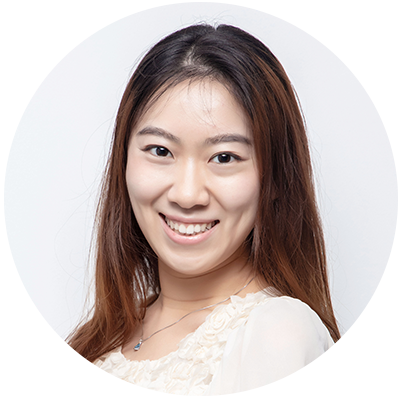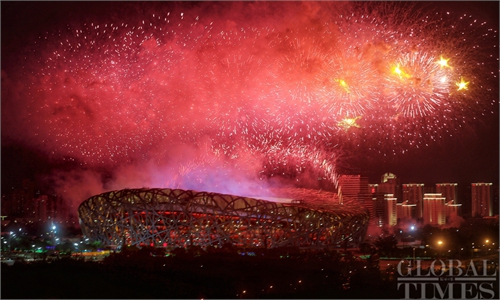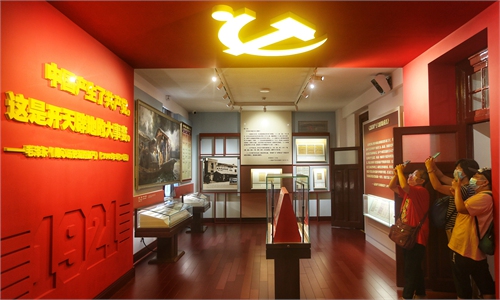CPC centenary exhibition inspires younger generation at the birthplace of ‘New Culture Movement’
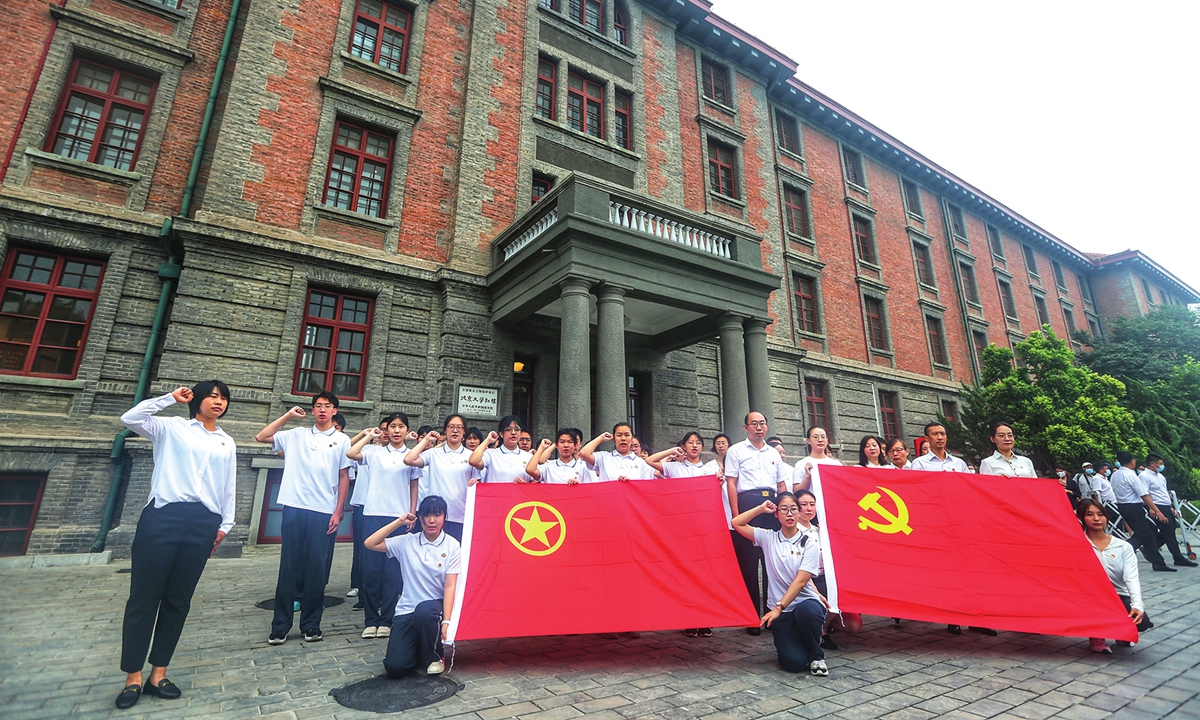
Students carrying a CPC flag (right) and a flag of the Communist Youth League of China have a group photo taken in front of the Red Building on Tuesday. Photo: Cui Meng/GT
The debut of an exhibition, held at the former Peking University's Red Building and depicting stories of how the way was paved for the establishment of the Communist Party of China (CPC), attracted on Tuesday 1,000 visitors who came to appreciate the significant hub of thought that was part of the early history of the Party.
The Global Times noticed that group visitors lined up as early as 9 am on Tuesday morning for the opening of the exhibition and swarmed past a four-story red brick building dubbed "Red Building."
As the birthplace of the New Culture Movement and the remarkable place where Marxism first enlightened many Chinese people, the building serves as a "Red Culture" educational hub at the centenary anniversary of the CPC.
The Red Building, once the main campus of Peking University (PKU), was so named because of its red brick walls and red tile roofs. Within its walls, elite Chinese intellectuals and students, including Li Dazhao, Chen Duxiu, Mao Zedong, and Deng Zhongxia, developed an early sense of Marxism, which has, since then, shaped China's modern political framework.
The first batches of visitors were mainly students and staff members from high schools and universities in Beijing, who carried along with them CPC flags to take the joining-Party oath at the Red Building.
"Organized by my university, this visit is of great significance on the occasion of the centenary of the founding of the CPC. In the TV drama The Age of Awakening, I have seen many of the scenes that are displayed here, and it is with curiosity and admiration that I come to revisit the scenes where those pioneers brainstormed themselves and founded the great Party," a student surnamed Liu from PKU told the Global Times on Tuesday.
"I was very much looking forward to coming here, to having a dialogue with the activists of 100 years ago, through words and materials," Liu said, revealing that he is in the process of applying to become a CPC member.
Today, PKU is a leading institution for Marxist studies in China. In 2018, the university inaugurated the "Dazhao Class" program named after CPC pioneer Li Dazhao, director of Peking University Library, also co-founder of the CPC. The class cultivates talents in the field of theoretical Marxism.
"This exhibition vividly and accurately reflects the entire process of the Party's inception and formation from its infancy to its maturity today. Each valuable showpiece tells a history integral to the making of the CPC and is the most precious wealth of spirit for every visitor here," Cao Keqin, a retired Party member who visited the exhibition on Tuesday, told the Global Times.
The exhibition has created different thematic displays presenting depictions from "the patriotic students of the May Fourth Movement who fought against Western powers," "the exploration of early ways to save the country," to "the working class participating in national politics."
The exhibition, covering an area of 8,000 square meters, has 958 pictures, 1,357 pieces of cultural relics, and many other artworks and film and television materials on display, Huang Chunfeng, vice curator of the memorial hall, told the Global Times on Tuesday.
Reservations for the exhibition have already reached the daily maximum capacity of 1,000 people for the coming days. It will be open to non-group visitors in the near future, said Huang.
The exhibits featured in "the influence of Russia's October Revolution on China" and "How young Mao Zedong affirmed Marxist belief in Beijing" also recalled how international communism boosted the CPC in its early days.
The exhibition restored the offices of Party pioneers Li Dazhao and Chen Duxiu at the building from the 1910s, the reading room where Mao Zedong used to work as a libarian, and the classrooms of early PKU students, some of whom later became instrumental figures in the birth of the CPC.
Various journals and newspapers published during that period are also displayed at the exhibition, including the first edition of "New Youth" magazine which significantly inspired the earliest followers of the cultural reform, many of whom were early members of the CPC.
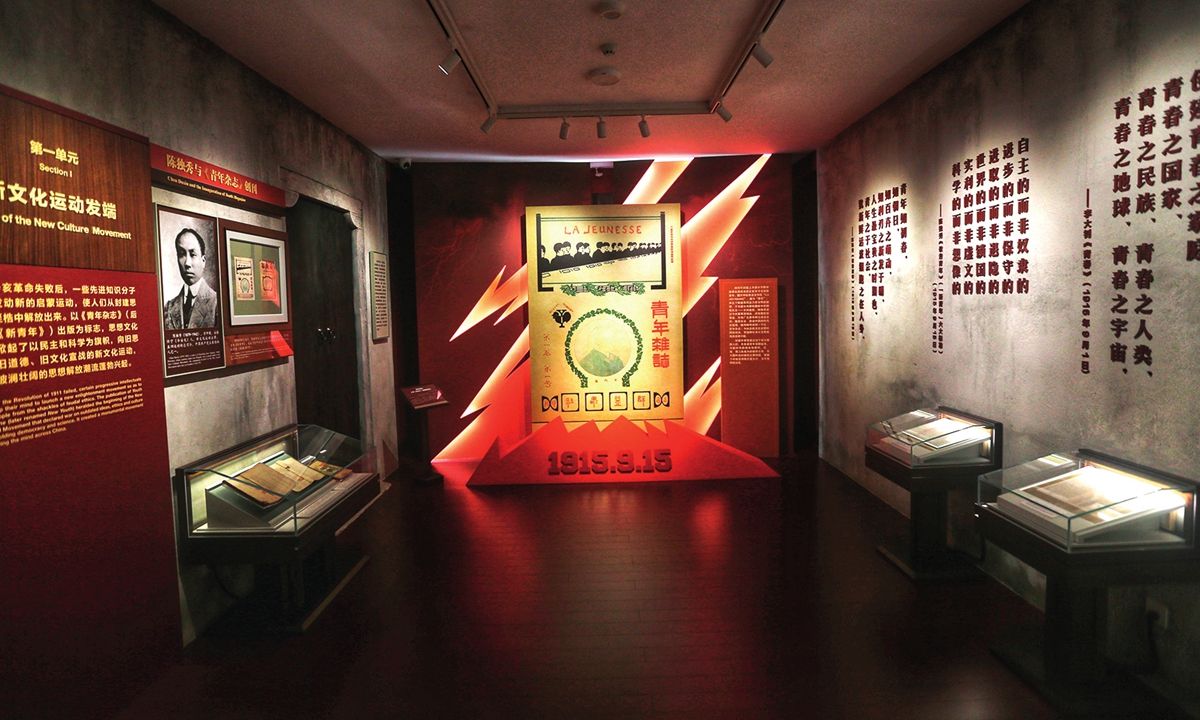
A reproduction of the first edition of "New Youth" magazine, which significantly inspired the earliest followers of the New Culture Movement Photo: Cui Meng/GT
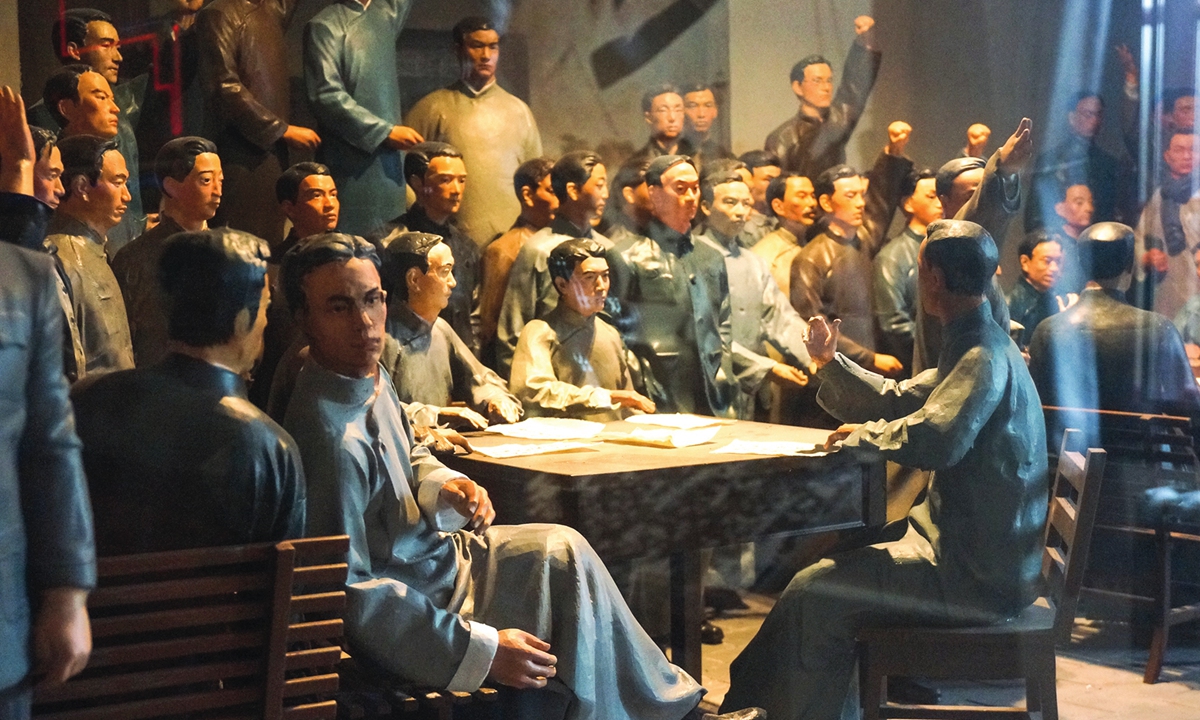
Diorama of patriotic students gathering on the eve of the May Fourth Movement to discuss sociopolitical reform Photo: Hu Yuwei/GT

Visitors take pictures at the Memorial Hall of Red Building. Photo: Cui Meng/GT
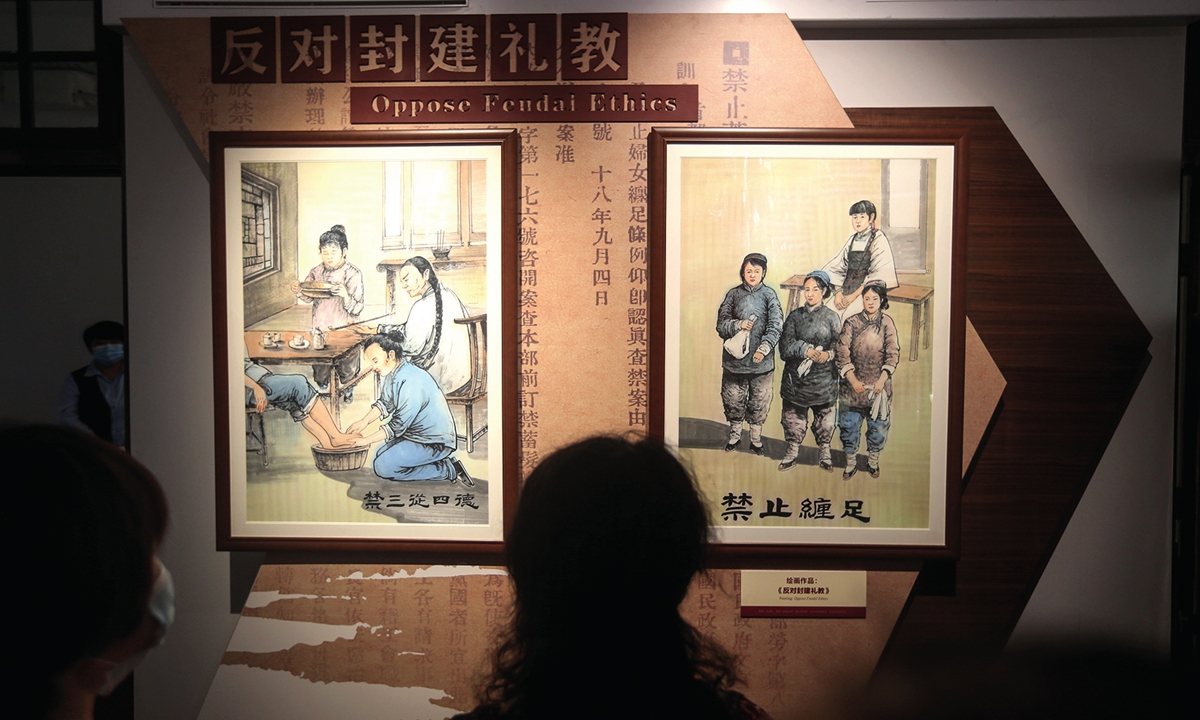
A visitor gazes at the oil paintings that theme the opposing of feudal ethics. Photo: Cui Meng/GT
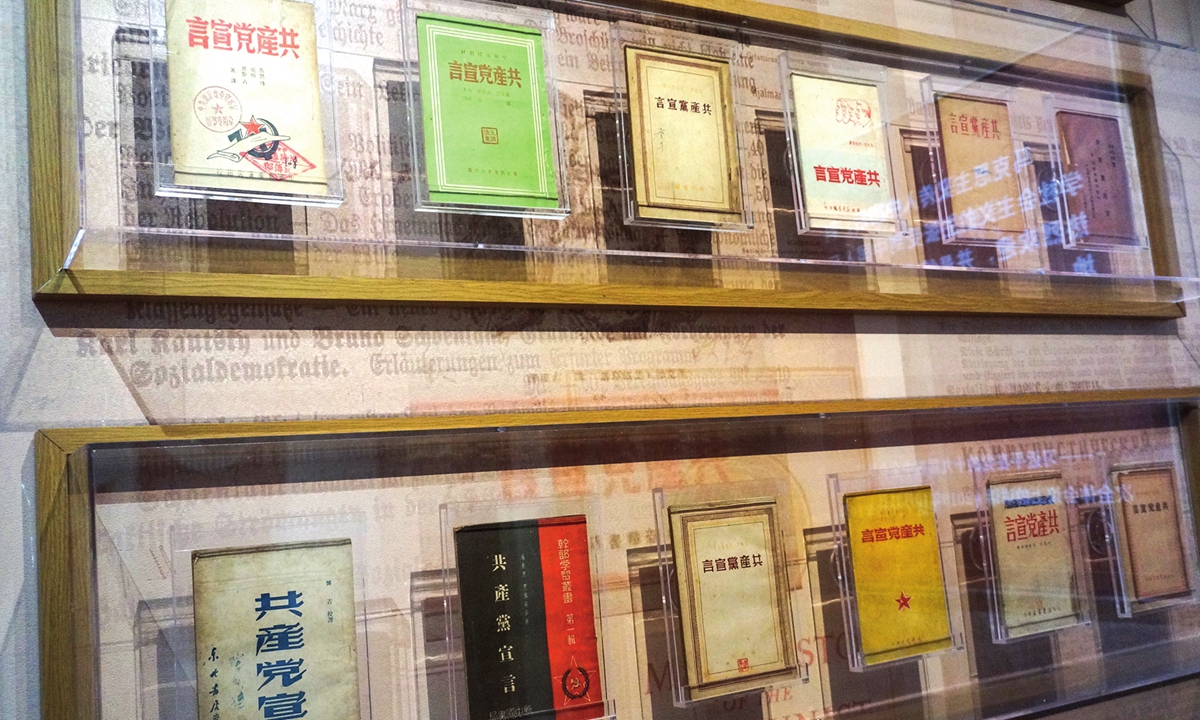
Various Chinese translations of the Communist Manifesto Photo: Hu Yuwei/GT
